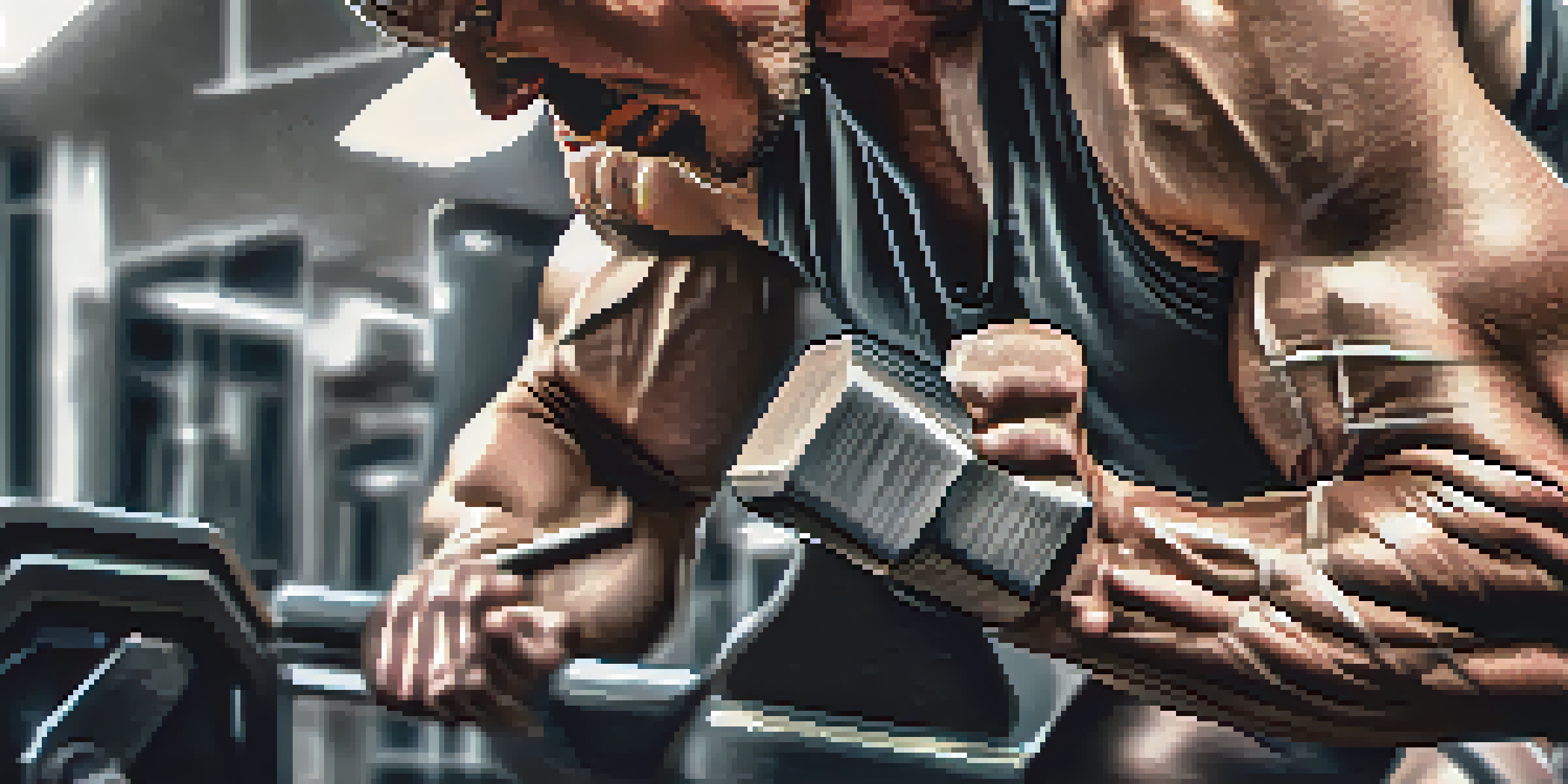Mechanical Tension and Its Importance in Muscle Hypertrophy

What is Mechanical Tension in Muscle Training?
Mechanical tension refers to the force applied to muscles during resistance training. It's a crucial element in building muscle, as it stimulates the fibers to adapt and grow. Think of it like stretching a rubber band; the more you pull, the more it wants to return to its original shape, leading to growth.
What we fear doing most is usually what we most need to do.
When lifting weights, your muscles experience tension from the load, which signals the body to repair and strengthen those fibers. This process is essential for hypertrophy, or muscle growth, as it prompts the body to adapt to increased demands. Just like a tree grows stronger with each storm it withstands, your muscles grow denser and larger with proper tension.
Without adequate mechanical tension, your workouts may fall short of promoting significant muscle growth. It's not just about lifting heavy weights; it's about understanding how and when to apply that tension for optimal results.
The Science Behind Muscle Hypertrophy
Muscle hypertrophy is fundamentally a response to stress placed on your muscles. When you challenge your muscles with mechanical tension during workouts, tiny tears occur in the muscle fibers. This process, known as microtrauma, is essential for muscle growth as the body repairs these tears, resulting in larger and stronger muscles.

The body uses various signaling pathways to mediate this repair process, primarily involving hormones like testosterone and growth factors. These hormones help to recruit satellite cells, which are crucial for muscle repair and growth. Imagine them as the construction crew that comes in to fix and upgrade the damaged areas after a storm.
Mechanical Tension Drives Growth
Mechanical tension is crucial for muscle growth as it stimulates fibers to adapt and strengthen during resistance training.
In essence, mechanical tension is like the spark that ignites the entire muscle-building process. Without it, your muscles may not receive the necessary signals to grow, leading to stagnation in progress.
Types of Mechanical Tension in Workouts
Mechanical tension can be categorized into two types: active and passive tension. Active tension occurs when muscles contract under load, such as during a bicep curl. Passive tension, on the other hand, happens when muscles are stretched without any active contraction, like during a deep stretch.
Strength does not come from physical capacity. It comes from an indomitable will.
Both types play a role in muscle growth, but active tension is typically more influential in promoting hypertrophy. Imagine lifting a heavy weight; the strain you feel is a direct result of active mechanical tension working to overcome the load.
Incorporating both active and passive tension into your training can yield better results. By combining heavy lifting with stretching techniques, you ensure that your muscles are both challenged and adequately prepared for growth.
The Role of Volume and Intensity
Volume and intensity are key factors in mechanical tension and muscle hypertrophy. Volume refers to the total amount of weight lifted over time, while intensity is the degree of effort exerted during each lift. Balancing these two elements is crucial for maximizing muscle growth and avoiding plateaus.
For example, performing multiple sets of heavy squats increases mechanical tension, leading to greater muscle adaptations. However, if the weight is too light, the tension may not be sufficient to elicit a strong growth response.
Balance Volume and Intensity
Finding the right balance between volume and intensity is essential for maximizing mechanical tension and promoting consistent muscle growth.
Ultimately, finding the right balance between volume and intensity helps you harness mechanical tension effectively. By progressively increasing your weights and reps, you create a consistent challenge for your muscles, promoting continual growth.
Progressive Overload and Its Significance
Progressive overload is a training principle that involves gradually increasing the demands on your muscles. This method ensures that mechanical tension continues to rise over time, which is vital for ongoing muscle hypertrophy. Think of it as climbing a staircase; each step should be slightly higher to keep moving upwards.
Implementing progressive overload can be achieved by increasing weights, altering repetitions, or adjusting rest periods. For instance, if you can comfortably lift a certain weight for 10 reps, pushing for 12 or increasing the weight will keep the mechanical tension at an optimal level.
Neglecting this principle can lead to stagnation, as your muscles will adapt to a fixed load. By continuously challenging your muscles, you maintain mechanical tension, fueling growth and strength gains.
The Importance of Recovery in Muscle Growth
Recovery plays a significant role in the muscle hypertrophy process, especially after applying mechanical tension in workouts. When you train intensely, your muscles need time to repair and grow stronger. Without proper recovery, the benefits of mechanical tension can be lost.
During recovery, the body works to repair the micro-tears in muscle fibers, which is when growth actually occurs. It's like letting your garden rest after planting; the more care and time you give it, the more it flourishes.
Recovery Fuels Muscle Adaptation
Proper recovery allows muscles to repair and grow after workouts, maximizing the benefits gained from mechanical tension.
Incorporating rest days and ensuring adequate sleep and nutrition are essential components of your training regimen. By prioritizing recovery, you allow your muscles to adapt effectively, maximizing the benefits of mechanical tension.
Practical Tips for Maximizing Mechanical Tension
To make the most of mechanical tension in your training, focus on using compound movements like squats, deadlifts, and bench presses. These exercises recruit multiple muscle groups, allowing for greater tension and more significant adaptations. They’re the heavy hitters of the workout world, delivering powerful results.
Additionally, aim for a controlled tempo during your lifts. Slowing down the eccentric (lowering) phase of an exercise can increase time under tension, which is essential for muscle growth. It’s like savoring a delicious meal; the slower you enjoy it, the more satisfying it becomes.

Finally, listen to your body. Tracking your progress and making adjustments based on how you feel will ensure you're applying the right amount of mechanical tension for continued growth. With the right approach, you'll be on your way to achieving your muscle-building goals.